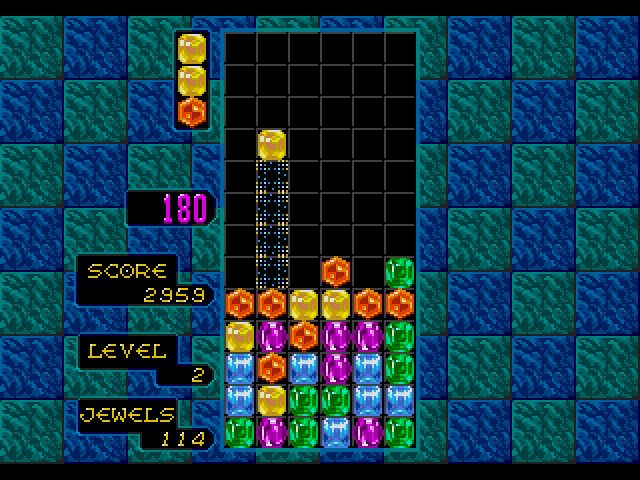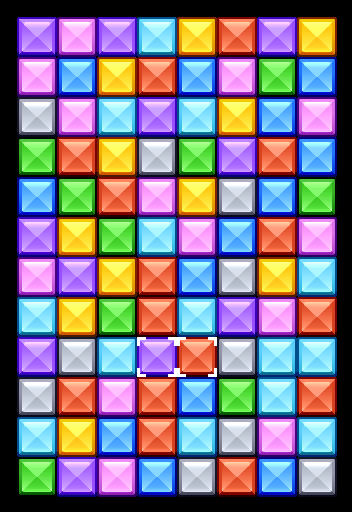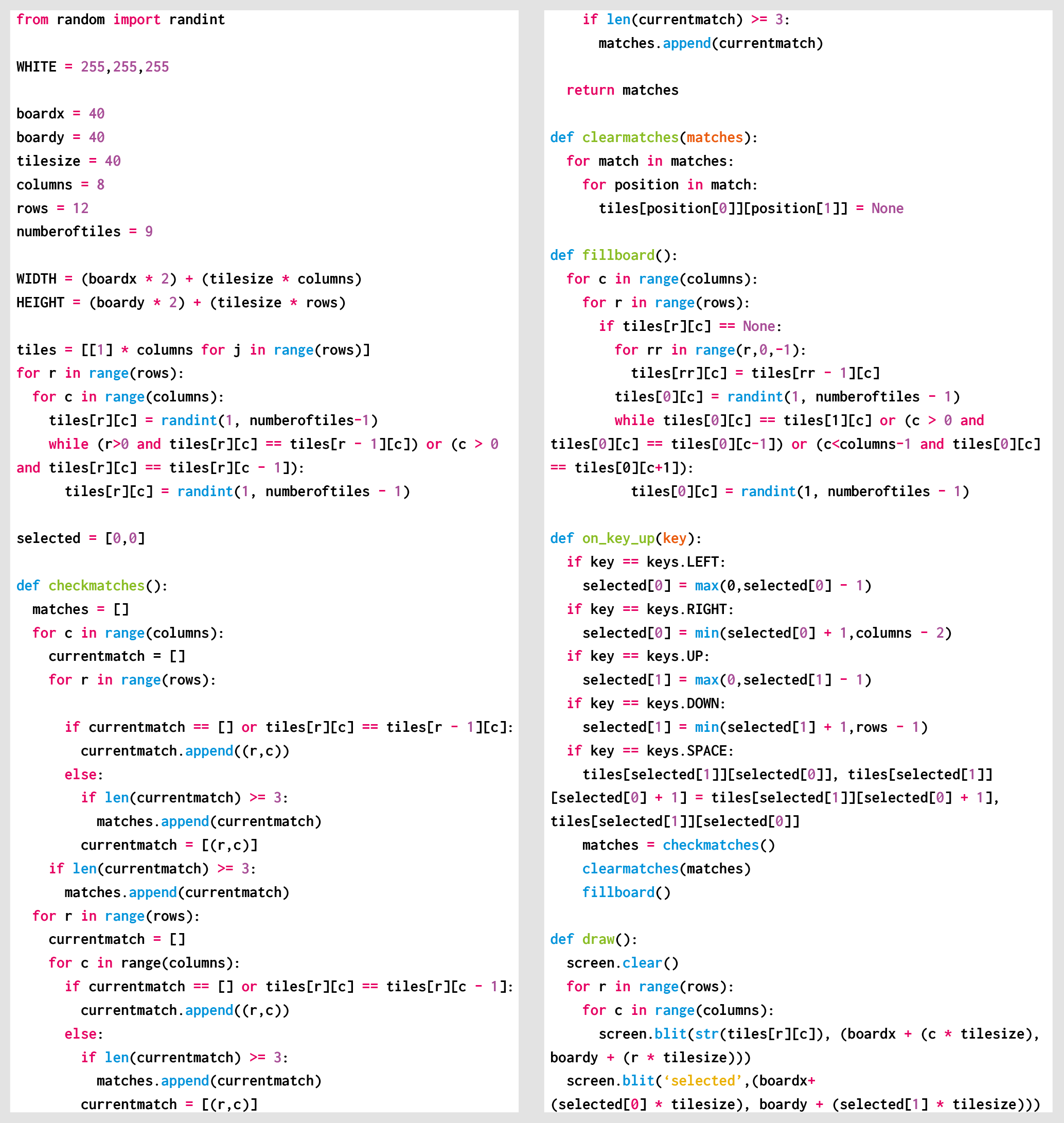Raspberry Pi’s own Rik Cross shows you how to code your own Columns-style tile-matching puzzle game in Python and Pygame Zero.

Created by Hewlett-Packard engineer Jay Geertsen, Columns was Sega’s sparkly rival to Nintendo’s all-conquering Tetris.
Columns and tile-matching
Tile-matching games began with Tetris in 1984 and the less famous Chain Shot! the following year. The genre gradually evolved through games like Dr. Mario, Columns, Puyo Puyo, and Candy Crush Saga. Although their mechanics differ, the goals are the same: to organise a board of different-coloured tiles by moving them around until they match.
Here, I’ll show how you can create a simple tile-matching game using Python and Pygame. In it, any tile can be swapped with the tile to its right, with the aim being to make matches of three or more tiles of the same colour. Making a match causes the tiles to disappear from the board, with tiles dropping down to fill in the gaps.
At the start of a new game, a board of randomly generated tiles is created. This is made as an (initially empty) two-dimensional array, whose size is determined by the values of rows and columns. A specific tile on the board is referenced by its row and column number.
We want to start with a truly random board, but we also want to avoid having any matching tiles. Random tiles are added to each board position, therefore, but replaced if a tile is the same as the one above or to it’s left (if such a tile exists).

Our board consists of 12 rows and 8 columns of tiles. Pressing SPACE will swap the 2 selected tiles (outlined in white), and in this case, create a match of red tiles vertically.
In our game, two tiles are ‘selected’ at any one time, with the player pressing the arrow keys to change those tiles. A selected variable keeps track of the row and column of the left-most selected tile, with the other tile being one column to the right of the left-most tile. Pressing SPACE swaps the two selected tiles, checks for matches, clears any matched tiles, and fills any gaps with new tiles.
A basic ‘match-three’ algorithm would simply check whether any tiles on the board have a matching colour tile on either side, horizontally or vertically. I’ve opted for something a little more convoluted, though, as it allows us to check for matches on any length, as well as track multiple, separate matches. A currentmatch list keeps track of the (x,y) positions of a set of matching tiles. Whenever this list is empty, the next tile to check is added to the list, and this process is repeated until the next tile is a different colour.
If the currentmatch list contains three or more tiles at this point, then the list is added to the overall matches list (a list of lists of matches!) and the currentmatch list is reset. To clear matched tiles, the matched tile positions are set to None, which indicates the absence of a tile at that position. To fill the board, tiles in each column are moved down by one row whenever an empty board position is found, with a new tile being added to the top row of the board.
The code provided here is just a starting point, and there are lots of ways to develop the game, including adding a scoring system and animation to liven up your tiles.

Here’s Rik’s code, which gets a simple tile-match game running in Python. To get it working on your system, you’ll first need to install Pygame Zero. And to download the full code, go here.
Get your copy of Wireframe issue 25
You can read more features like this one in Wireframe issue 25, available now at Tesco, WHSmith, all good independent UK newsagents, and the Raspberry Pi Store, Cambridge.
Or you can buy Wireframe directly from Raspberry Pi Press — delivery is available worldwide. And if you’d like a handy digital version of the magazine, you can also download issue 25 for free in PDF format.

Make sure to follow Wireframe on Twitter and Facebook for updates and exclusive offers and giveaways. Subscribe on the Wireframe website to save up to 49% compared to newsstand pricing!
Website: LINK
Schreibe einen Kommentar
Du musst angemeldet sein, um einen Kommentar abzugeben.